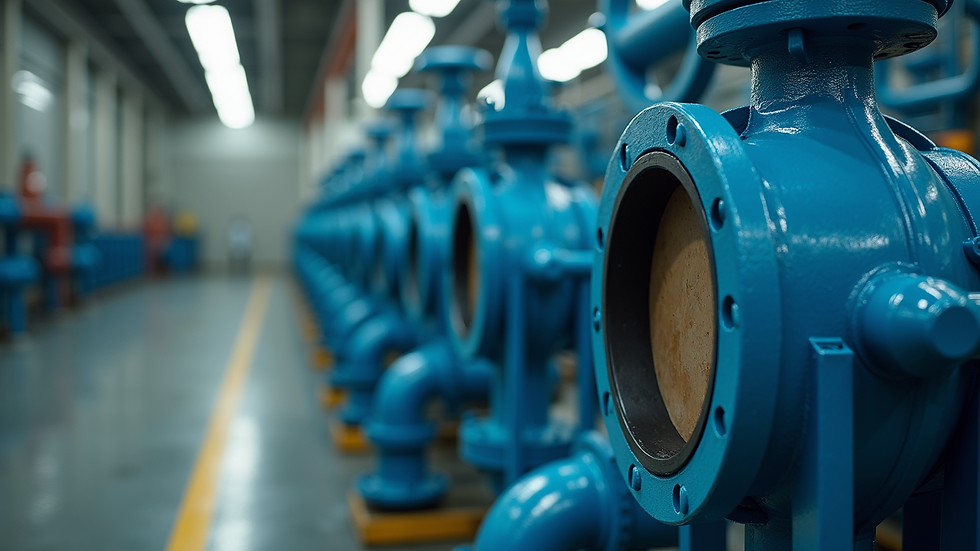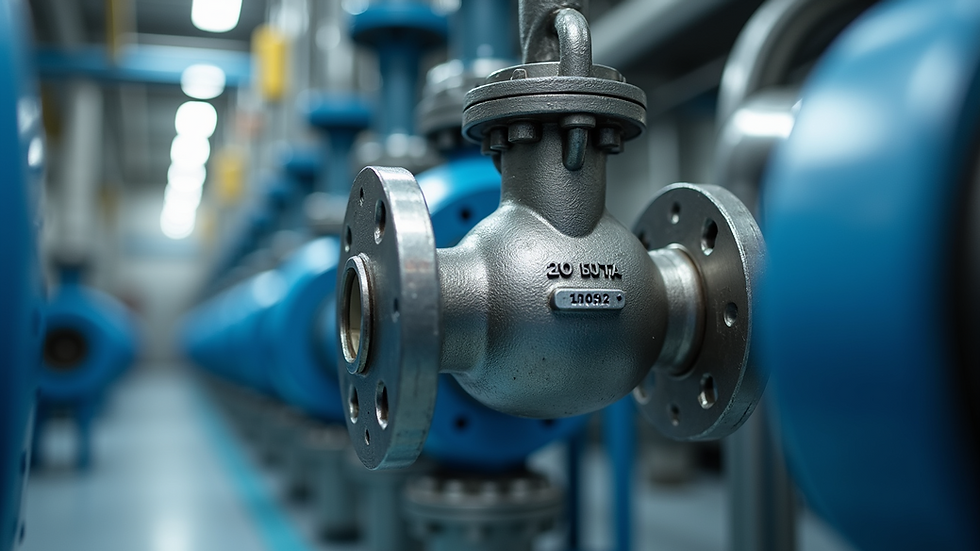Understanding the Different Types of Butterfly Valves
- Mark Richardson
- Aug 7
- 4 min read
Butterfly valves are essential components in many piping systems, offering a simple yet effective way to control the flow of liquids and gases. Their compact design and ease of operation make them popular in various industries, from water treatment to chemical processing. This article explores the different types of butterfly valves, their unique features, and practical applications to help you choose the right valve for your needs.
What Are Butterfly Valves and How Do They Work?
Butterfly valves consist of a circular disc mounted on a rotating shaft. When the valve is fully closed, the disc blocks the flow, and when it is fully open, the disc is rotated a quarter turn to allow flow. The disc’s position can be adjusted to regulate flow as needed.
These valves are known for their quick operation, lightweight design, and cost-effectiveness. They are commonly used in systems where space is limited and where a tight shut-off is not critical. Butterfly valves come in various designs, each suited to different pressure ratings, media types, and installation requirements.

Types of Butterfly Valves and Their Applications
There are several types of butterfly valves, each with distinct characteristics. Understanding these types will help you select the best valve for your specific application.
1. Wafer Butterfly Valves
Wafer butterfly valves are designed to fit between two pipe flanges. They are held in place by the flange bolts, which pass through the valve’s body. This design makes them lightweight and easy to install or remove for maintenance.
Applications:
Water distribution systems
HVAC systems
Low-pressure applications
Advantages:
Compact and lightweight
Cost-effective
Easy to install
Limitations:
Not suitable for high-pressure systems
Requires precise flange alignment
2. Lug Butterfly Valves
Lug butterfly valves have threaded inserts (lugs) around the valve body. These allow the valve to be bolted directly to the pipe flanges. This design enables the valve to be used as an end-of-line valve, meaning one side of the piping can be disconnected without disturbing the other.
Applications:
Industrial piping systems
Chemical processing
Water treatment plants
Advantages:
Can be used for dead-end service
Easy to install and remove
Suitable for higher pressure than wafer valves
Limitations:
Slightly heavier and more expensive than wafer valves
3. Flanged Butterfly Valves
Flanged butterfly valves have flanges on both ends of the valve body, which are bolted directly to the pipe flanges. This design provides a strong, leak-proof connection and is suitable for high-pressure and high-temperature applications.
Applications:
Oil and gas pipelines
Power plants
Chemical industries
Advantages:
Strong and durable connection
Suitable for high pressure and temperature
Easy to maintain
Limitations:
Heavier and more expensive
Requires more space for installation

4. Triple Offset Butterfly Valves
Triple offset butterfly valves are designed for high-performance applications. They feature three offsets in the disc and shaft alignment, which eliminates rubbing between the disc and seat. This design provides a tight seal and reduces wear, making them ideal for critical services.
Applications:
High-pressure steam systems
Oil and gas refining
HVAC systems requiring tight shut-off
Advantages:
Metal-to-metal sealing for durability
Minimal wear and long service life
Suitable for high pressure and temperature
Limitations:
Higher cost
Requires precise installation
5. Butterfly Valves with Resilient Seats
These valves have a soft, resilient seat made from materials like rubber or PTFE. The seat provides a tight seal when the valve is closed, preventing leaks. They are commonly used in water and wastewater applications.
Applications:
Water treatment plants
Food and beverage industry
Pharmaceutical processing
Advantages:
Excellent sealing performance
Resistant to corrosion and chemicals
Cost-effective
Limitations:
Not suitable for very high temperatures
Seat material may degrade over time
Choosing the Right Butterfly Valve for Your System
Selecting the right butterfly valve depends on several factors, including the type of fluid, pressure, temperature, and installation environment. Here are some practical tips to guide your choice:
Consider the media: For corrosive or abrasive fluids, choose valves with appropriate seat materials like PTFE or metal seats.
Pressure and temperature: High-pressure or high-temperature systems require robust designs like flanged or triple offset valves.
Installation space: Wafer valves are ideal for tight spaces due to their compact design.
Maintenance needs: Lug and flanged valves offer easier maintenance options.
Cost considerations: Wafer and resilient seat valves are generally more affordable but may not suit all applications.
For example, if you need a reliable valve for a standard water pipeline, a 4 inch butterfly valve with a resilient seat might be the best choice. It offers a good balance of cost, performance, and ease of installation.

Installation and Maintenance Best Practices
Proper installation and maintenance are crucial to ensure the longevity and performance of butterfly valves. Here are some actionable recommendations:
Installation:
- Ensure the valve is installed in the correct orientation as per manufacturer instructions.
- Avoid over-tightening flange bolts to prevent damage to the valve body.
- Use appropriate gaskets and seals to prevent leaks.
Operation:
- Operate the valve slowly to avoid water hammer or pressure surges.
- Avoid using the valve as a throttling device unless it is designed for that purpose.
Maintenance:
- Regularly inspect the valve for signs of wear, corrosion, or leaks.
- Clean the valve components during scheduled maintenance to prevent buildup.
- Replace seals and seats as needed to maintain tight shut-off.
Following these practices will help you maximize the valve’s service life and reduce downtime.
Enhancing System Efficiency with Butterfly Valves
Butterfly valves contribute significantly to system efficiency by providing reliable flow control with minimal pressure drop. Their quick operation allows for fast response times in process control, which is essential in many industrial applications.
To enhance efficiency:
Choose valves with low torque requirements to reduce actuator energy consumption.
Use valves with smooth disc profiles to minimize turbulence and pressure loss.
Implement automated control systems with butterfly valves for precise flow regulation.
By integrating the right butterfly valve into your system, you can improve performance, reduce operational costs, and ensure safety.
Understanding the different types of butterfly valves and their applications is key to making informed decisions for your piping systems. Whether you need a simple wafer valve for low-pressure water lines or a high-performance triple offset valve for critical industrial processes, selecting the right valve will ensure reliable operation and long-term value. Keep in mind the installation and maintenance tips to get the best out of your butterfly valves.



Comments